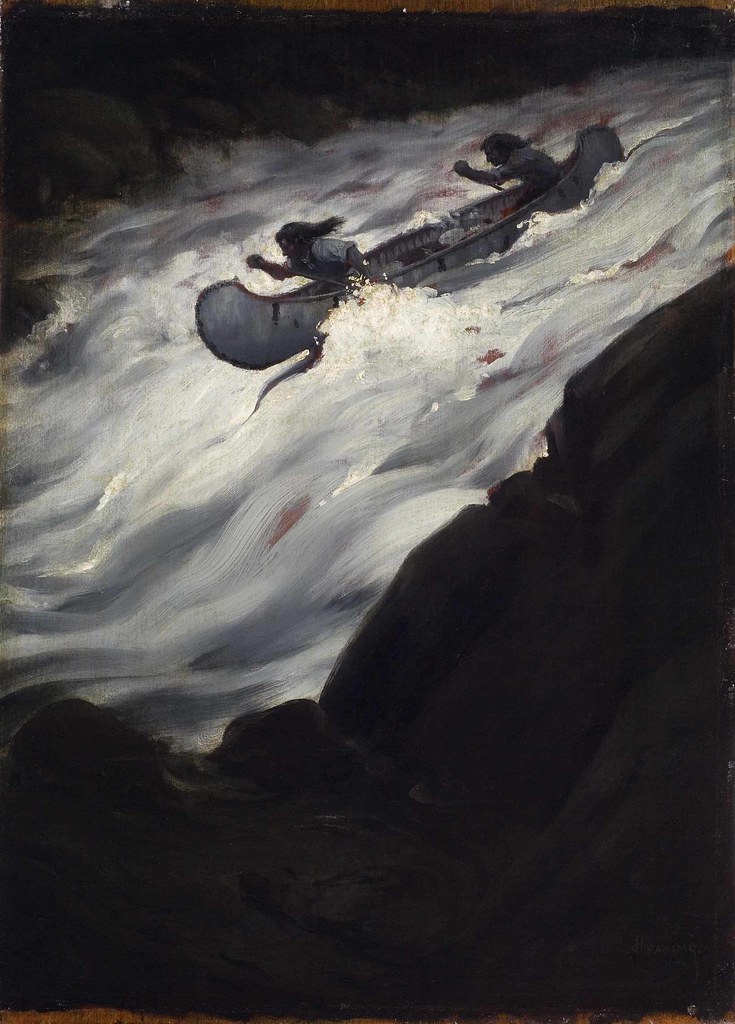Tegene Kunbi (1980) was born and raised in Addis Ababa, Ethiopia. From 1998 to 2004 he, too, received his art training at the university. In 2007 he received the prestigious DAAD scholarship. A year later he moved to Berlin to further develop his painting there at the Universitat der Kunste.
From Africanah.org
Oftentimes in the artist’s compositions, color is stacked. This dynamic arrangement of color may be viewed in works such as End Day (2013), where bold strokes of red and purple sweep across the composition. A myriad of activity is hinted at underneath, and can still be sensed in the strata of green, violet and blue.
Paintings such as Mold (2013) highlight the variation in his application of the paint. From light and translucent to thick and voluminous brushstrokes, the resulting surface is rich with texture and a history of saturated layers built one on another.
Tegene Kunbi was born in Ethiopia in 1980. He received his BFA from the University of Addis Ababa in 2004. Through 2009 he continued his education at the Universität der Künste Berlin. Recent exhibitions include Galerie Gerken (Berlin, DE) and the Goethe Institute (Göttingen, DE.). The artist is the recipient of the prestigious DAAD scholarship.
He evokes worlds – he is an alchemist like Klee, Rothko, Mitchell, Diebenkorn and Frankenthaler. Kunbi had me thinking of Kandinsky on the spirituality of art.
Kunbi lives and works in Berlin, having left Addis Ababa to further his painting studies with an esteemed group of professors at the Universität der Künste Berlin.
The artist’s deliberate compositions of geometric form and color express the artist’s constant mind’s eye view on his native landscape, its clothing and the mural paintings of his homeland. His rhythmic compositions translate his African roots – the lay of the land, the narrow streets, and the color-saturated bustling, crowded marketplaces filled with textiles and daily necessities.
 The artist’s deliberate compositions of geometric form and color express
the artist’s constant mind’s eye view on his native landscape, its
clothing and the mural paintings of his homeland. His rhythmic
compositions translate his African roots – the lay of the land, the
narrow streets, and the color-saturated bustling, crowded marketplaces
filled with textiles and daily necessities.
The artist’s deliberate compositions of geometric form and color express
the artist’s constant mind’s eye view on his native landscape, its
clothing and the mural paintings of his homeland. His rhythmic
compositions translate his African roots – the lay of the land, the
narrow streets, and the color-saturated bustling, crowded marketplaces
filled with textiles and daily necessities.
All images are courtesy of The Margaret Thatcher Project
The artists website is here
His work is a reflection of an inner dialogue that culminates in a battle for structure. His rhythmic compositions betray both his African roots (landscapes, farmland and bustling markets) and, secondly, his stay in Germany (the 'Gründlichkeit "the orderly). Those two worlds he combines layer by layer to colorful and geometric grids. Under this apparent harmony of colors is a source of inner discord.
Recently he exhibited for Margaret Thatcher Projects and the Goethe Institut (Göttingen, Germany). (courtesy Tasting Art)From Africanah.org
Oftentimes in the artist’s compositions, color is stacked. This dynamic arrangement of color may be viewed in works such as End Day (2013), where bold strokes of red and purple sweep across the composition. A myriad of activity is hinted at underneath, and can still be sensed in the strata of green, violet and blue.
Paintings such as Mold (2013) highlight the variation in his application of the paint. From light and translucent to thick and voluminous brushstrokes, the resulting surface is rich with texture and a history of saturated layers built one on another.
Tegene Kunbi was born in Ethiopia in 1980. He received his BFA from the University of Addis Ababa in 2004. Through 2009 he continued his education at the Universität der Künste Berlin. Recent exhibitions include Galerie Gerken (Berlin, DE) and the Goethe Institute (Göttingen, DE.). The artist is the recipient of the prestigious DAAD scholarship.
He evokes worlds – he is an alchemist like Klee, Rothko, Mitchell, Diebenkorn and Frankenthaler. Kunbi had me thinking of Kandinsky on the spirituality of art.
Kunbi lives and works in Berlin, having left Addis Ababa to further his painting studies with an esteemed group of professors at the Universität der Künste Berlin.
The artist’s deliberate compositions of geometric form and color express the artist’s constant mind’s eye view on his native landscape, its clothing and the mural paintings of his homeland. His rhythmic compositions translate his African roots – the lay of the land, the narrow streets, and the color-saturated bustling, crowded marketplaces filled with textiles and daily necessities.
 The artist’s deliberate compositions of geometric form and color express
the artist’s constant mind’s eye view on his native landscape, its
clothing and the mural paintings of his homeland. His rhythmic
compositions translate his African roots – the lay of the land, the
narrow streets, and the color-saturated bustling, crowded marketplaces
filled with textiles and daily necessities.
The artist’s deliberate compositions of geometric form and color express
the artist’s constant mind’s eye view on his native landscape, its
clothing and the mural paintings of his homeland. His rhythmic
compositions translate his African roots – the lay of the land, the
narrow streets, and the color-saturated bustling, crowded marketplaces
filled with textiles and daily necessities.All images are courtesy of The Margaret Thatcher Project
The artists website is here





























